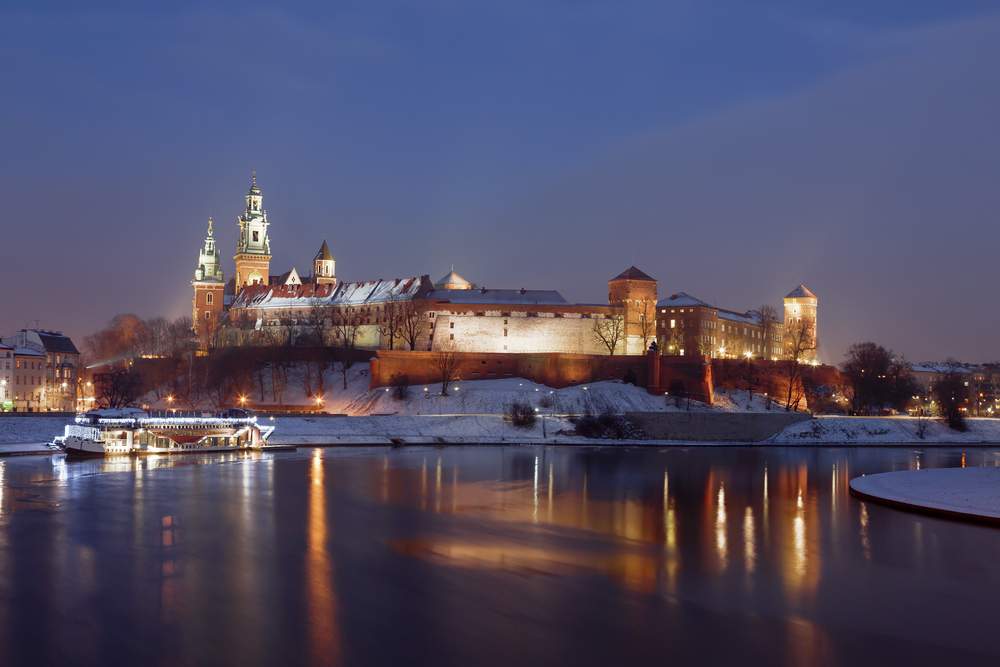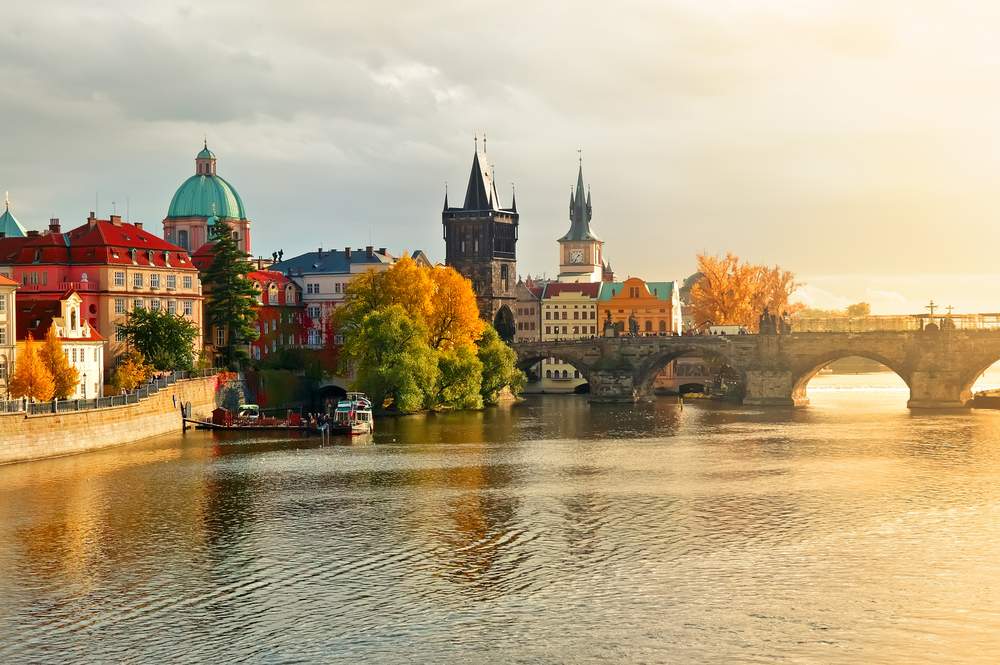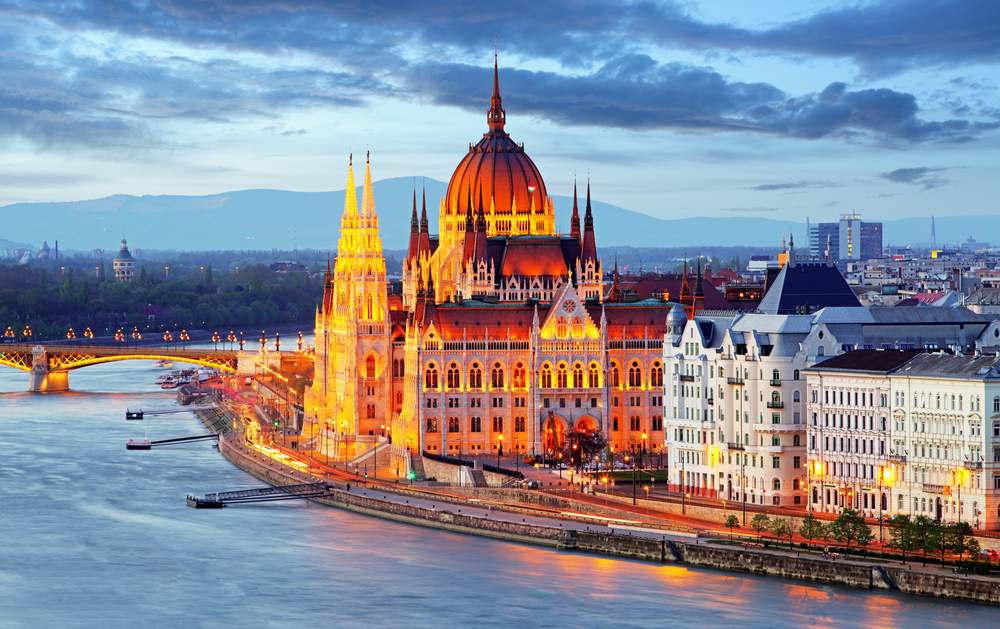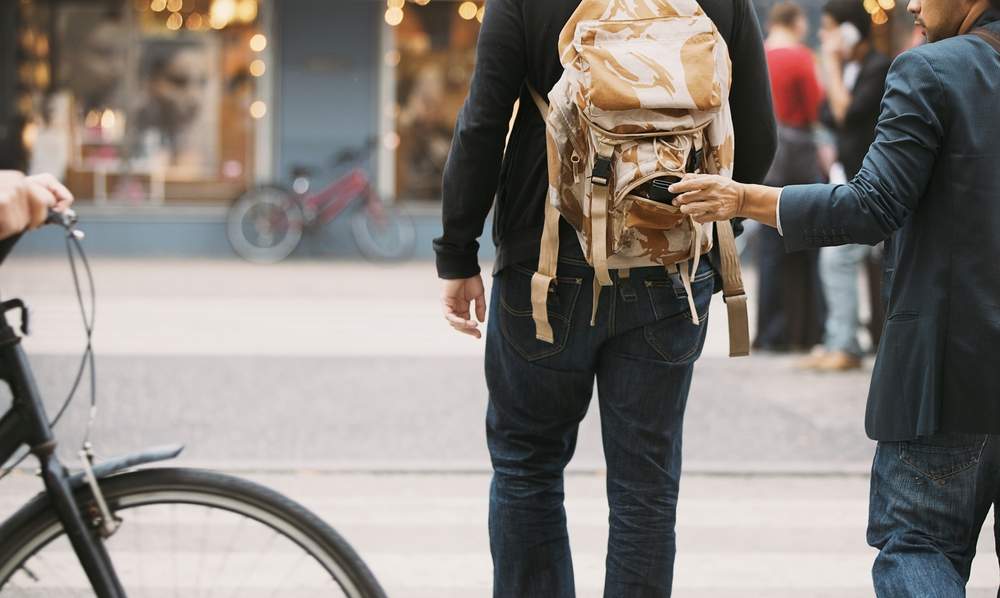Central Europe is
Western Europe and
Eastern Europe‘s oft overlooked sibling, despite being located, quite literally in the middle of it all. Seemingly without the glamor of Paris, Rome, or other iconic European destinations, it can be daunting to plan a trip to this lesser-traveled corner of Europe. What is there to see? How can you find out about it?
Rest assured, you’ll find a Europe with a fascinating history, generally lower prices, and incredible off-the-beaten-path surprises. Check out my suggestions for where to go, as well as my best practical advice for making the most of your time in Central Europe, below.
Poland

When I think of Poland, I can’t help but remember its tumultuous past. Numerous times throughout the course of history, Poland was invaded, divided, and taken over by outsiders. Six death camps were established by Nazi Germany on Polish soil during the Second World War, including the most famous of them,
Auschwitz. During this tragic period, Poland lost nearly 20% of its population to these camps. But Poland managed to rebuild and has become one of the strongest and fastest growing post-Communist countries. Modern day Poland is exciting and hopeful, but retains undeniably unhappy relics from it tragic past.
Cities in Poland
Kraków: In Poland’s former capital you can enjoy the romance and beauty of Old Europe at a fraction of the price. Here, you’ll find stunning
Wawel Castle, listed as a UNESCO World Heritage Site, as well as a stunning variety of architectural details and finishings spanning centuries. You’ll also encounter a large population of tourists, many who come from other parts of Europe to party for the weekend.
Warsaw: To see Poland’s more modern side, visit it’s current capital. Most of Warsaw was rebuilt following World War II, and the city now features prominent skyscrapers, making its skyline a bit different from most Central and Eastern European cities. In the city center, enjoy the tranquil park adjoining Lazienki Palace, built on an artificial island.
Torun: This medieval city was the birthplace of Nicolaus Copernicus. Many of the buildings are over 700 years old, making this city a must-see for fans of Gothic architecture.
Sopot: One of Poland’s main resort cities and part of a tri-city metropolitan area, it’s flanked by Gdansk in the south and Gdynia in the north. Sopot is a major beach destination, with plenty of restaurants, bars, and clubs. It also has the longest wooden pier in Europe (over a quarter of a mile long), a popular place for a stroll with tourists. You can also visit the very strange Krzywy Domek (crooked house), which looks like something from a fairy tale.
Polish Food and Drink
Pierniki toruńskie: Torun gingerbread, a medieval delicacy from the city of Torun. It comes in shapes ranging from a simple heart to complex designs created with traditional wooden molds.
Oscypek: Smoked cheese, often sold from street stalls, which can only be found in the Tatra Mountains of Poland. Sheep’s milk cheese is pressed into decorative molds and smoked – think smoked gouda, but made with sheep’s milk and much prettier to look at.
Pierogi: Potato filled dumplings, usually boiled, fried, and served with bacon or a heaping spoonful of sour cream. Sometimes they’re stuffed with cheese and onions, too.
Zubrowka: Everyone knows about Polish vodka, so why not sample something you can only get in Poland? Zubrowka is a special type of vodka, fermented from rye and flavored with buffalo grass. This grass can’t be legally used in food in the U.S., so chances are, you’ve never had this particular variety of vodka before. Traditionally, it’s served with cold apple juice over a couple of ice cubes.
Activities
Skiing: Zakopane is Poland’s most popular ski town and a great place to experience traditional Polish culture. Stroll down its picturesque main street and enjoy traditional winter feasts, complete with dancing, music, and people in traditional costume.
Auschwitz: The displays can be disturbing, and at times, grisly. But there is no denying their emotional impact,gravity, and importance.
Go to Hel: The Hel peninsula is situated off the tri-city of Gdansk, Sopot, and Gdynia, and can be reached by train or ferry. The shallow water around the peninsula makes it the perfect place for water sports such as windsurfing and kitesurfing.
When to go to Poland
Really,what’s more important is when NOT to go. July and August are the most popular times of the year, as most of Europe is also on vacation during this period. The shoulder seasons are less crowded while still being temperate, and there are plenty of reasons to visit Poland even when the skies are gray.
Czech Republic

Romantic, historical architecture. Gilded buildings, stunning churches, hearty fare, and beer. And don’t forget the vibrant nightlife. Though as a nation, it’s still quite young, Czech Republic has hundreds of years of history. While Prague isn’t the hidden gem it once was, you can still enjoy what one European told me was “the Vegas of Europe.” Stop by the Golden City to take your picture by the historic Charles Bridge, check out a nightclub or two, and see the world’s oldest functional astronomical clock. Venture deeper into the country to explore its historic castles and enjoy the history of pilsner beer firsthand.
Czech Cities
Prague: A city with international appeal, Prague has become more touristed and crowded than ever in recent years. Seek out the less traveled sights: bridges other than the famous Charles Bridge (plenty of them equally picturesque), beautiful riverside parks with unusual art, and unusual museums. Then head out at night and make some new friends in the city’s numerous bars and nightclubs. The last time I was here, I spent the evening debating the (non)merits of Nickleback with some Norwegian boys in club Coyote Ugly. Prague has some of the most kitschy, fun bars and clubs you’ll find anywhere – just go with the flow and see where the evening takes you.
Kutná Hora: The main attraction of this town is the famous Sedlac Ossuary – a church decorated with human bones. Here you can also tour the ancient mines below the city, once some of the most productive silver mines in Europe.
Czech Food and Drink
Pilsner and Budvar: The two cities most associated with Czech beer, Plzeň and České Budějovice, may have German translations familiar to beer nerds: Pilsen and Budweis. Yes, the Budweiser Budvar you’ll enjoy here is a Czech beer and not made by Anheuser-Busch, although the term did inspire the name for the American beer. Pilsner Urquell, on the other hand, is the world’s first pilsner. Both breweries can be toured, and never fear, samples are on the menu.
Knedlíky: Czech fare is hearty. A meal usually consists of meat and a side, and you’ll find most dishes come with this one. Knedliky is a large dumpling which is sliced before serving (think pieces about as big as slices of bread). Perfect for cleaning your plate!
Bramboráky: I’ve got a terrible weak spot for fried potatoes, and these hit just about every button for me. Thin, crispy potato pancakes, sometimes with sauerkraut mixed in, served with a dollop of sour cream. In the winter they sell them hot from street stalls, a perfect handful of potatoey goodness.
Things to do
Spas: You could spend your entire trip going from spa resort to spa resort in the Czech Republic. All offer therapeutic mineral hot spring bathing in picturesque settings – gorgeous palatial architecture surrounded by woods. The most well known, Karlovy Vary, hosts cultural and sports events throughout the year. Most offer activities such as skiing, biking, hiking, and even surfing and horseback riding
Castles: Some of the most amazing 12th and 13th-century castles can be found in the Czech Republic. The forbidding medieval architecture is stunning and unique. Karlštejn Castle, about 15 miles southwest of Prague, is the most frequently visited, while Hluboká nad Vltavou is the most stunning, in my opinion.
When to go to Czech Republic
Summer in the Czech Republic is mild and sometimes rainy. It’s about what you’d expect for Central Europe. Be prepared with an umbrella for summer thunderstorms that break up the hot days. Spring and fall have the most pleasant weather, but also the most visitors. Winters can be cold and snowy, but they’re a beautiful, and often less crowded time of the year to visit. Prague has amazing Christmas markets that will warm you right up with Bramboráky and mugs of mulled wine.
Hungary

Hungary is still recovering from the 1990s, when a severe recession and a declining economy led to unrest and political upheaval. It was hit hard by the worldwide recession in the mid-2000s and still struggles economically. The country sits at the crossroads between Eastern and Central Europe, and much of it has yet to be developed for tourism. Hungary’s youth are passionate about their country and political reform and are quick to discuss politics with foreigners.
Cities in Hungary
Budapest: The capital of Hungary is split into two sides, Buda, and Pest by the Danube river. Perched along the river are the city’s iconic buildings and monuments, including its massive Parliament. Next door to Matthias Church, the Fisherman’s Bastion, a monument to the Seven Magyar tribes, is great for panoramic views. From Budapest, a hydrofoil service runs along the Danube to Visegrad and Esztergom, both historically prominent and beautiful cities.
Hungarian Food and Drink
Goulash: Rich stew made with plenty of Hungarian paprika, sold in the markets and pretty much everywhere. Meat and paprika are mandatory, other spices and vegetables vary. Goulash is often served with egg noodles or potatoes.
Gundel palacsinta: A thin, crepe-like pancake, with a spiced walnut filling, topped with chocolate sauce.
Tokaji: A varietal of white wine unique to the Tokaj region of Hungary. Although in the U.S., Tokaji is known primarily as a sweet wine, it comes in all variations in Hungary, and you should definitely try the dry version while you’re here.
Palinka: A type of fruit brandy traditionally produced at home using the fruits of one’s orchard. Beware of the alcohol content, which can be as high as 80% (that’s 160 proof for you Americans)!
Activities
Thermal Baths: Budapest is home to the largest thermal bathhouse in Europe: the Szechenyi thermal baths, dating back to the 1900s. Bask in Roman style glory, and don’t forget to bring your own suit and flip-flops!
Jewish memorials: A grim reminder of history and of how ingrained it is into Hungarian psyche. Two prominent memorials in Budapest include the Shoes on the Danube and the House of Terror. Shoes on the Danube illustrates a mass execution where Jews were forced to line up along the river and take off their shoes. They were then shot. The House of Terror is a former Nazi and Communist headquarters reformed into a museum. As you walk through the museum, you realize that the past is not as comfortably far away as it seems from our view in the U.S.
Lake Balaton: Located in the western half of Hungary is this remarkable lake, which despite its 230 square mile (595 square km) surface area, never gets deeper than 40 feet (12 meters). The slope is gradual enough that you can walk out for nearly a mile and still stand on the bottom. As well as being a popular swimming and beach destination, Balaton offers thermal springs and extensive sailing.
When to go to Hungary
Though Hungary is generally less crowded than other tourist destinations, you’ll want to stick to the shoulder seasons if you want to avoid crowds. Some places close in the winter, so your best bet is to go in the spring. The weather is lovely, and the budding season counteracts the gloomy atmosphere of the cities a bit.
Practical Information for Travel in Central Europe

Getting Around
Rail: Perhaps the easiest and most straightforward way to get around Central Europe is to purchase a rail pass from
Eurails. These discounted travel tickets are only available to foreigners and offer great value as well as a fairly hassle-free way to get from country to country. With a range of country combinations and travel days to choose from, you can tailor your ticket to fit your budget.
Many express trains require seat reservations, so be sure to inquire at the station. Station managers aren’t exactly friendly, but they’re used to tourists and will stamp your ticket and provide reservations if you ask nicely. Youth tickets (for travelers under 26) are cheaper than adult tickets. Trains also offer first class seating and restaurant cars for an additional expense.
Bus: Buses aren’t quite as fast or comfortable as trains, but they offer quite a bit more flexibility at a lower price. A 15 day Eurolines bus pass that covers pretty much all of Europe can be purchased, depending on the season, starting at €195 for a 15-day youth ticket.
Be advised that a 5-day rail pass means 5 days of actual travel – only the days you are actually on the train count whereas the 15-day bus pass is valid for 15 days in a row, whether or not you travel during those days. A 30-day pass is also available.
Air: You’ll probably discover that it’s too expensive and too much of a hassle to fly from city to city inside Central Europe, especially to Poland. However, discount airlines are a great way to get from a major airport, such as London or Amsterdam, to smaller Central European cities. This is a great way to fly into one city and out of another without breaking the bank.
European airlines that fly to Central Europe include: Ryanair, Easyjet, Airberlin, Norwegian Air, Wizzair, Germanwings, Jet2, SmartWings, and Vueling.
Car: Most major American car rental companies provide rentals in Europe, too. They include Hertz, National, Budget, Avis, and more. Driving offers the advantage of total freedom – being able to stop and see anything that interests you. If your trip focuses on small towns and countrysides, consider driving. However, if you’re under 26, there may be surcharges for extra insurance. Something else that can result in high surcharges is dropping the car off in a different country than where you picked it up.
It’s probably a good idea to inform the car rental company of your itinerary to make sure you’re carrying the right paperwork. Beware of any online services offering an “international driver’s license.” There’s no such thing. You should go to your local AAA office and get an International Driving Permit – a passport sized translation of your driver’s license in multiple languages, complete with photo. The IDP alone is not a license, and you must carry your U.S. driver’s license and passport as well. If you’re overseas and need an IDP, you can apply for one by mail. It’ll take 4-6 weeks unless you include additional postage for express mail.
Motorcycles and Bikes : Depending on your preferences, you may find Central Europe to be too cold and rainy for much bike or moto/moped riding. But if you want to experience this quintessentially European method of transport on the odd sunny day, many companies offer daily rentals.
Vaccinations and Health Information
Although
Central Europe isn’t known for communicable diseases like malaria, zika, SARS, or yellow fever, you should always consult your doctor for their advice and the CDC website for current updates. The CDC recommends that all travelers are up to date with the current U.S. vaccination schedule, plus Hepatitis A and B. Rabies is recommended if you plan on being in contact with local wildlife, with extra caution recommended for travelers that will be in contact with bats while caving or camping outdoors.
Tick-borne illness can be a problem in the Czech Republic from early spring through late fall, so if you will be hiking or camping outdoors, take normal precautions to avoid tick bites. There is no vaccine for Lyme disease, but you can be vaccinated for tick-borne encephalitis. Again, ask your doctor for help.
It’s always a good idea to keep basic painkillers and anti-diarrhea medication on hand. If you’re bringing prescription medication, keep them in their original containers and bring the script with you when possible.
Central Europe’s medical care is adequate but you may have difficulty finding an English speaking doctor, especially in rural areas. Expect to pay cash for treatment, even if your health insurance or travel insurance covers it. In many locations, providers may not be equipped to bill your insurer directly. It’s best to call your insurance company before traveling to find out whether you are covered overseas, and if so, what services are included and how to apply for payment/reimbursement (oftentimes it’s cheaper to pay for medical care in these countries out-of-pocket than to pay co-pays after billing). For basic medical needs, pharmacists can be a good option. In some locations, they can even prescribe antibiotics and other medications like your physician in the U.S.
Visas
Poland,
Czech Republic, and
Hungary are all part of the
Schengen Agreement, which allows U.S. citizens to enter these countries without a visa for up to 90 days for tourism or business purposes.
It’s 90 days total for all Schengen countries, so if you spend 60 days in Poland and then go to Hungary, you only have 30 days left to travel without a visa.
A stamp in your passport is your best means for proving the length of time you have spent in a country. Some borders, for example, during train crossings, may not be staffed to stamp your passport. If this happens, you should take the time to request a stamp at a point of entry. I was questioned at length by an officer in Germany about my length of stay in Spain, because my passport wasn’t stamped upon entry to Spain. The seriousness of the interrogation was really off-putting. To avoid a similar experience, be prepared to document the length of your stay, proof of sufficient funds, and a return airline ticket, if you are arriving in a Schengen country without a visa. It’s also a good idea to have the location and contact information for the nearest U.S. Consulate on hand, just in case.
Safety
Violent crime is rare in Central Europe, but pick-pocketing is common. Keep your wits about you and follow these basic travel tips:
- In Poland, Hungary, and the Czech Republic, you’re required to present identification (your passport) when requested by law enforcement. Always keep your passport and money tucked underneath your clothing, preferably on your front side. Avoid putting away valuables in public places where pickpockets may be watching. I’ve had friends get pickpocketed after carefully putting their wallets in the very bottom of their backpack while standing in a metro station. Keep a copy of your passport information page and a copy of your credit cards somewhere safe and away from your passport – tucked into the lining of your luggage, for example. This will help you replace your passport and cancel your credit cards if they’re lost or stolen.
- Use ATMs in brightly lit and well-trafficked areas such as commercial banks and hotels. It’s safer for you while you obtain your money.
- Register with the local U.S. consulate so they have your information on hand should anything happen.
Have you traveled in Central Europe? What would you recommend? Comment below to share your stories and suggestions.
Want to learn more about these destinations in Central Europe? Read on at the links below:
- Central Europe Indie Travel Guide
- Poland Indie Travel Guide
- Czech Republic Indie Travel Guide
- Hungary Indie Travel Guide
Photo Credits: shutterstock.com, NavinTar /shutterstock.com, volkova natalia /shutterstock.com, Ihor Pasternak /shutterstock.com, https://www.shutterstock.com/g/TTstudio/shutterstock.com, Jacob Lund.



